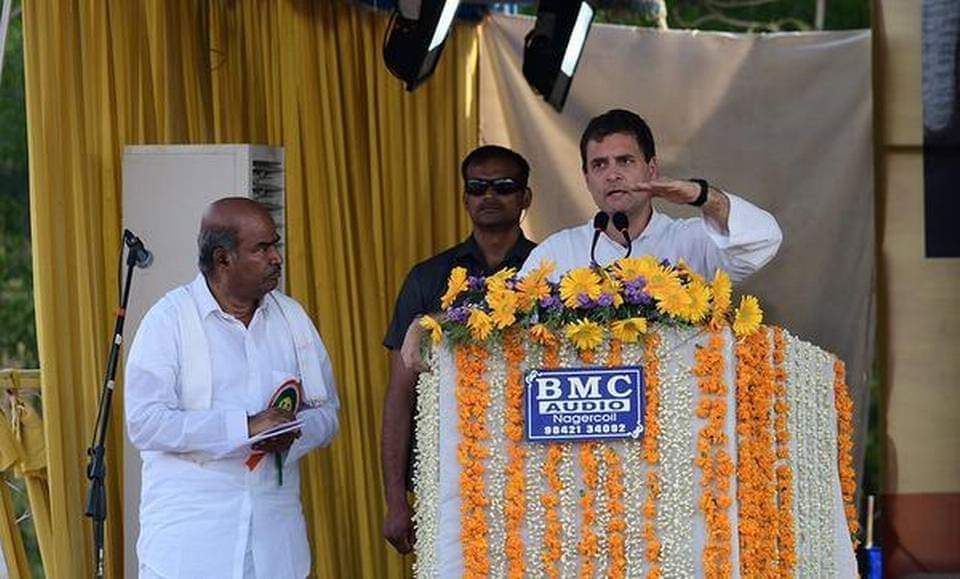
How translators helped Hindi-heartland leaders reach out to Tamils

Former Union Minister KV Thangabalu’s recent translation of a speech made by Rahul Gandhi drew guffaws and derision on social media. The translation was not only daft but wrong. It became a goldmine for meme creators and trolls. Such translations not only spoil the true spirit of the speech but also bring unwanted attention to the political parties concerned.
Has such faux pas happened in the past, too? Not really.
When one looks at the history of Tamil Nadu, most translators would not just interpret the speech of leaders speaking in Hindi, but would also embellish them suitably. Every time leaders from the Hindi belt would make statements, the translators would articulate those remarks in a more nuanced way to strike an emotional chord with the people.
The history of accurate translations can be traced back to the period of Mahatma Gandhi. During the Independence movement, the father of the nation found a translator in Tamil scholar Thiru V Kalyanasundaram or more popularly known as Thiru Vi Ka. He was the first one to call Gandhi an ‘Adigal’, a rough Tamil equivalent of ‘Mahatma.’ This immediately brought Gandhi closer to the hearts of the Tamil people.
Interestingly, Thiru Vi Ka was also the first one to use the word ‘Thozhargal’ (Tamil for comrades), which is used widely in the state today not only by Leftists but also Dravidianists. Thiru Vi Ka also translated the speeches of Bomanji Pestonji Wadia, one of the founders of the Madras Labour Union. During one of his visits to Chennai, Wadia addressed the gathering as “comrades”. Thiru Vi Ka translated the word into ‘Thozhargal’, which had an immediate effect on people. They started to respect Wadia and take his speeches more seriously.
Former Prime Minister Indira Gandhi had a faithful translator in EVK Sampath. A powerful orator himself, Sampath while translating Indira Gandhi’s speeches introduced a new style to the whole exercise. Whenever she made hard-hitting remarks against opposition parties, Sampath was careful enough not to hurt the feelings of others. For example, he would not say “he/she lied”, instead he would say “he/she didn’t speak the truth”. While, historically, Dravidian ideologues were good in oratory, there never arose much need to translate the speeches made by other leaders. The reason being their main stage and audience was the state and its people and not the Centre.
However, when leaders from national parties like the Congress and the Bharatiya Janata Party came visiting, they needed translators and they mostly relied on members of their respective state units. That is how journalist Gnani ended up translating speeches of former Prime Minister VP Singh. Murasoli Maran, former Union minister, too translated VP Singh’s speeches. But the former’s translation was considered more nuanced than Maran’s.
Often, some translations are way off the mark because the translators are not well-versed in the source language. Even if they are good in both the languages, but lack knowledge about the subjects being spoken about, the results would be the same — disastrous. That is precisely why party functionaries who are well-read and well-informed are often considered to be the best choice for the job.
For that matter, the Congress in the past was careful in choosing its translators. Rajiv Gandhi had P Chidambaram and Sonia Gandhi had Peter Alphonse to translate for them. Chidambaram always stuck to the original speech and translated it with cent percent accuracy. Although his translations lacked embellishments, his error-free and easy to understand approach made people take a liking to the late prime minister.
In December last year, Peter Alphonse translated the speech of Sonia Gandhi when she was in Chennai to unveil the statue of the DMK patriarch M Karunanidhi. The translation was not only accurate but the message was well-articulated, too. For example, while Sonia listed the achievements of Karunanidhi, she said, “Karunanidhi amended land-ceiling laws.” When Alphonse translated, it became: “Karunanidhi brought a revolution in land-ceiling laws.”
”Sonia’s mention of Karunanidhi as a “social reformer” found a new meaning in Alphonse’s translation as “Samuga Needhi Porali” (social justice warrior). Although there wasn’t much difference between the two, the translation gave it a larger than life appeal and moved the audience emotionally.


